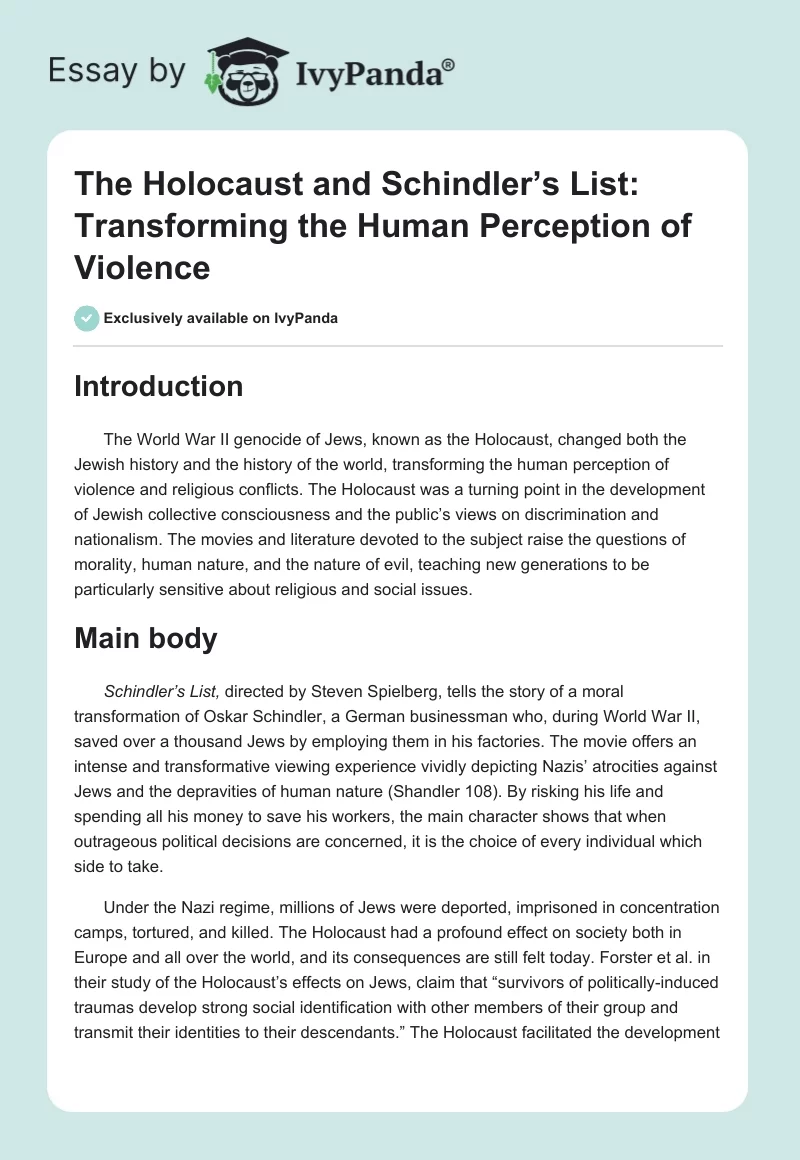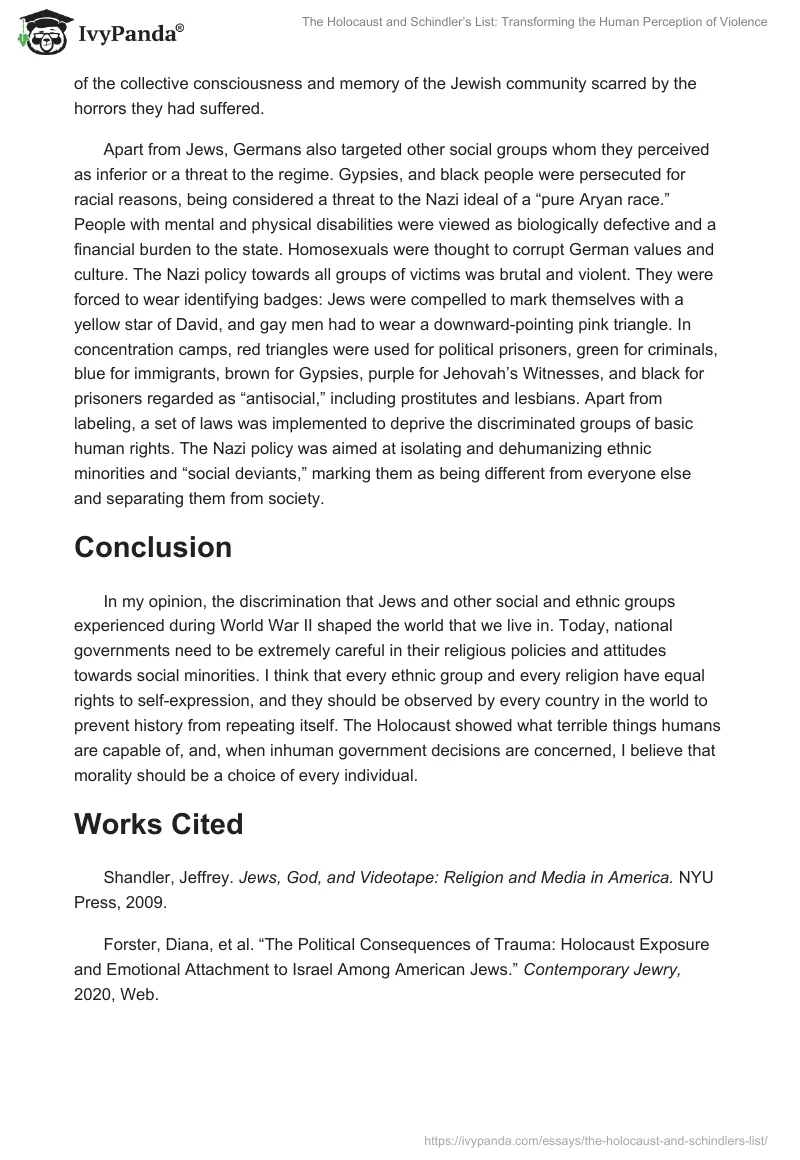Introduction
The World War II genocide of Jews, known as the Holocaust, changed both the Jewish history and the history of the world, transforming the human perception of violence and religious conflicts. The Holocaust was a turning point in the development of Jewish collective consciousness and the public’s views on discrimination and nationalism. The movies and literature devoted to the subject raise the questions of morality, human nature, and the nature of evil, teaching new generations to be particularly sensitive about religious and social issues.
Main body
Schindler’s List, directed by Steven Spielberg, tells the story of a moral transformation of Oskar Schindler, a German businessman who, during World War II, saved over a thousand Jews by employing them in his factories. The movie offers an intense and transformative viewing experience vividly depicting Nazis’ atrocities against Jews and the depravities of human nature (Shandler 108). By risking his life and spending all his money to save his workers, the main character shows that when outrageous political decisions are concerned, it is the choice of every individual which side to take.
Under the Nazi regime, millions of Jews were deported, imprisoned in concentration camps, tortured, and killed. The Holocaust had a profound effect on society both in Europe and all over the world, and its consequences are still felt today. Forster et al. in their study of the Holocaust’s effects on Jews, claim that “survivors of politically-induced traumas develop strong social identification with other members of their group and transmit their identities to their descendants.” The Holocaust facilitated the development of the collective consciousness and memory of the Jewish community scarred by the horrors they had suffered.
Apart from Jews, Germans also targeted other social groups whom they perceived as inferior or a threat to the regime. Gypsies, and black people were persecuted for racial reasons, being considered a threat to the Nazi ideal of a “pure Aryan race.” People with mental and physical disabilities were viewed as biologically defective and a financial burden to the state. Homosexuals were thought to corrupt German values and culture. The Nazi policy towards all groups of victims was brutal and violent. They were forced to wear identifying badges: Jews were compelled to mark themselves with a yellow star of David, and gay men had to wear a downward-pointing pink triangle. In concentration camps, red triangles were used for political prisoners, green for criminals, blue for immigrants, brown for Gypsies, purple for Jehovah’s Witnesses, and black for prisoners regarded as “antisocial,” including prostitutes and lesbians. Apart from labeling, a set of laws was implemented to deprive the discriminated groups of basic human rights. The Nazi policy was aimed at isolating and dehumanizing ethnic minorities and “social deviants,” marking them as being different from everyone else and separating them from society.
Conclusion
In my opinion, the discrimination that Jews and other social and ethnic groups experienced during World War II shaped the world that we live in. Today, national governments need to be extremely careful in their religious policies and attitudes towards social minorities. I think that every ethnic group and every religion have equal rights to self-expression, and they should be observed by every country in the world to prevent history from repeating itself. The Holocaust showed what terrible things humans are capable of, and, when inhuman government decisions are concerned, I believe that morality should be a choice of every individual.
Works Cited
Shandler, Jeffrey. Jews, God, and Videotape: Religion and Media in America. NYU Press, 2009.
Forster, Diana, et al. “The Political Consequences of Trauma: Holocaust Exposure and Emotional Attachment to Israel Among American Jews.” Contemporary Jewry, 2020, Web.


